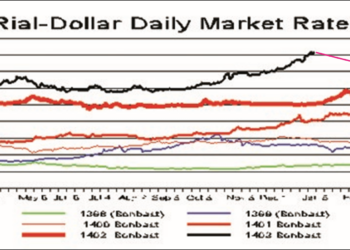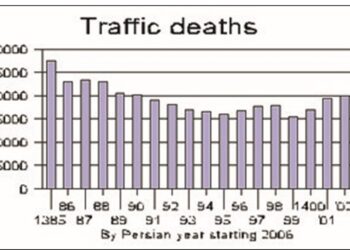September 01, 2017
The head of the Planning and Budget Organization, Mohammad-Baqer Nobakht, expects the government to run up a 370-trillion-rial ($9.6 billion) budget deficit this year, almost triple what it was just three years ago.
That would mean 10.7 percent of government spending would have to be covered by borrowing. By comparison, the US federal deficit last year was about 15 percent of spending.
Iran’s budget deficit has been increasing sharply during the past five years. The deficit for last year amounted to $7.62 billion, according to CBI. The figure stood at $5 billion in 2015-16 and $3.4 billion in the year before.
One problem for the government is that it assumed a higher price for oil than has been realized. This year’s budget assumes a $50 per-barrel price for crude, whose exports account for a majority of the government’s earnings. However, Nobakht said, the government has actually sold oil for $47.
Nobakht said last Wednesday that the government predicts 89 percent of the 3.46 quadrillion rials projected for “general revenues” will materialize by the end of the Iranian year, the state news agency reported.
The Central Bank of Iran’s latest report on the government’s balance sheet showed that revenues stood at 236.4 trillion rials ($6.2 billion) for the first quarter of the current year (March 21-June 21), up 9.6 percent from last year’s first quarter. But only 53 percent of the projected revenues for the three-month period materialized.
Spending stood at 548.8 trillion rials ($14.4 billion) in the first quarter, up 48.8 percent over the first quarter of a year before. The figure accounted for 85 percent of the expenditures predicted by the government for the quarter.
Revenues associated with the sales of oil, gas condensates and petrochemicals reached 188.9 trillion rials ($4.9 billion)—just 65 percent of what the government had expected to earn. In other words the problem was lower sales, not just lower prices, than anticipated
Tax revenues amounted to 181.9 trillion rials ($4.8 billion), indicating a 1.6 percent drop compared to last year’s first quarter.













